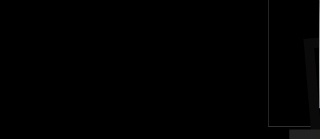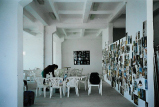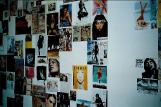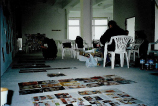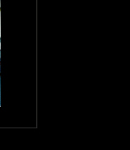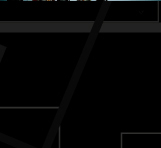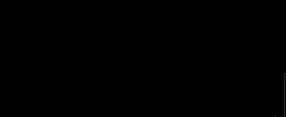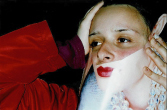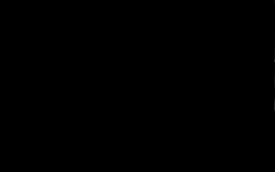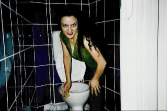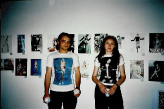![]() Project Report: Media, art and gender
Project Report: Media, art and gender
The project Media, art and gender consisted of three parts: lectures, workshop and exhibition. Each of these parts will be presented separately in this report. This text tells about the points of departure, the process of our work and the results of it. It recollects both the difficulties and the benefits of such project. It is about the satisfaction of joint work.
1. PRESENTATIONS
Danica Minic
1. Post socialist media: Gender and Representing the Nation
The first lecture started with the introduction
to different models of communication within media studies. The older, transmission
model has been replaced by constructivist model of communication. Instead
of the idea of media representation as a reflection of reality, media are
now seen as reconstructing reality at the same time while representing it.
The main body of the lecture was focused at the subject of `Gender and Representing
the Nation`, situated within the context of post socialism. The following
issues were discussed:
I Postsocialism and gender identity
II Representing the nation - a woman: 1.Mother homeland -nation as pure, natural
and united 2. Pictorial representations of nation by a female figure 3. Women
as cultural symbols - tradition and modernization
III Representing the nation - a man: a political portrait
The lecture was followed by extensive visual material that exemplified the
presented thesis. Visual examples of this subject were mainly taken from Serbian
media context (TV clips, press photos, paintings etc), but were accompanied
by the parallel of art and iconography history.
2. Gender, Advertising and Culture Jamming
The second lecture started with the introduction
to the issues of gender and advertising. The focus of this introduction was
the commercialization of women`s bodies as accompanying phenomena of postsocialist
transitions to market relations. Photos of billboards in Belgrade were presented
and discussed in this part.
The main subject of this lecture was the Culture Jamming, the umbrella - term
for the number of art/activist groups in USA, from 70ies up to now. Based
in the critical theory of media within the consumer society, culture jammers
show the inspiring model for symbolic alternative to media mainstream. They
pose the questions of access to the information and colonization of public
mind for commercial purposes. Their art strategies of intervening, manipulating
and recycling the media material point to the `radical politics of visual
literacy`(Umberto Ecco) useful for the methods of this workshop. The following
art groups were presented: Adbusters, Guerrilla Girls, Billboard Liberation
Front, ®TMark.
3. Eastern European Art Focused on Gender:
Private/Political Body
De/Contexts/Contrasts
The fist part of this presentation discussed
the works of Eastern European artists that deal with the relations between
the symbolic notions of gender and material existence of body. The following
artists were presented: Zdena Koleckova (Czech Republic), Jindra Vikova (Czech
Republic), Sanja Ivekovic (Croatia), Alicja Zebrowska (Poland), Katarzina
Kozyra (Poland), Silvia Lazarova (Bulgaria), Jelica Radovanovic (Serbia).
The contrast of illness, imperfections of physical body to idealized bodies
of media imagery, as well as influence that media has on our body postures
and gender specific behavior were the subject of some of these works. Some
others explored the body as powerful bearer of socio-political symbols, playing
on gendered body and signs of Nazism, victory, and religion.
The second part of this presentation focused at works that deconstruct mainstream
models of gender by the principle of decontextualization. Artists such as:
Sanja Ivekovic, Jelena Radic (Serbia), Alla Georgieva (Bulgaria) and Vlasta
Delimar (Croatia) were presented in this part. Putting skillfully together
contrasted contexts such as - advertising and anti fascist activism, embroidery
and pornography etc, they point to the exclusions and conflicts produced by
dominant gender models.
4. Eastern European Art Focused on Gender:
Applying the Role, Parody of Stereotypes
The last presentation pointed to the works
that investigate gender by using the tools of hyperbole, parody, self-objectification
etc. These artists were presented: Jelica Radovanovic, Milica Tomic (Serbia),
Tanja Ostojic (Serbia/Germany), Maja Rakocevic (Serbia), Rassim Krastev (Bulgaria),
Adelina Popnedeleva (Bulgaria), Boriana Dragoeva (Bulgaria), Daniela Kostova
(Bulgaria), Silvia Lazarova (Bulgaria) and Alla Georgieva.
Assuming the role of a woman as a symbol of the nation or the prostitute/angel
pair...of romantic couples, body builders and folk singers, some of these
artists deconstruct notions of femininity, masculinity by objectifying themselves
as too perfect models of gender. Other compare their personal experience to
media ideals or use the media imagery of gender to communicate the opposite
meanings.
GUEST PRESENTATION:
Smaranda Vultur: Photography of women in Timisoara at the beginning of XX century
Starting from the modernist notions of femininity and beauty and Timisoara archive of photographs, Smaranda Vultur analyzes the signification of gender, class and national identities of the women in those photos. She discusses the common body postures of Timisoara women in the photos at that time, which repeat the image of a woman as an actress, as well as the fashion of the folk dresses as a reference to nationality or symbolization of a certain jewelry as a sign of bourgeois identity. Her presentation and the archive photos as the part of the exhibition "Media, art and gender", provide a useful historical background for the issues of visual representations and constructions of gender.
2. WORKSHOP
The main idea of the workshop, as the part of `Media, art and gender` project,
was to offer to artists a chaotic amount of gender images (taken from different
magazines) as their working material and investigate the possibilities of
their reorganization into art works on the subject of gender. Individual or
joint work done within the workshop resulted in different attachments to such
working material. They range from personal experience related to these images
or discovery of visual patterns of mass media gender representations, to drawing
the parallel to art history. According to different approaches of the artists,
the process of the workshop had following directions:
work in space: reorganization of media material
These activities resulted in the grouping of media material according to the
visual patterns of gender images or media patterns in general. Looking through
this material made it possible to discover the patterns that were repeating
such as: the image of a doubled face of a woman (doubled in mirror or without
it), the image of a woman with half covered face, the fragmentation of the
body, the before & after pattern of beauty narratives etc. Apart from
these topic specific patterns, other groups of media material were made: romantic
couples, logos on the bodies, women - men, colorist or close - ups groups
and titles of these magazines were rearranged into experimental texts…
Practical work with this material provided an experience as the basis for
learning on media patterns.
private/public - personal experience
Some of the participants related their personal or everyday experience to
the magazine images found on the walls of H.arta space. The juxtaposition
of their private photos and stories to the sexism of tabloids and advertising
or to tellenovellas as a conventionally women`s genre, opened a space for
intimacy as the attitude to the public scenery of gender.
art/history parallel
The archive photography of Timisoara women in the beginning of XX century
provided the workshop from its start with the art/historical background. However,
the participants made other relations of that kind during the workshop. The
books from their private collections served as a point of departure for discovering
the similar visual patterns in representing the women`s bodies a century ago
and in today's fashion photography. The result of this comparison showed that
what was once considered as a pornographic body posture has entered into a
common fashion imagery.
media, art and gender spaces - toilet, alternative
gallery, street, room
The process of the workshop developed in a space sensitive way. Throughout
the workshop appeared the issues of topology of gender, art, intimacy or public
sphere. Some of these notions pointed to the material conditions related to
gender or art. Cleaning the toilet as a usual and unpaid women's work or the
material conditions in the alternative art space such as H.arta (such as listening
to the workers drills during the presentations) pointed to the existential
costs that are produced by social inequality or to difficulties that often
accompany the alternative choices. As some of the art works deal with these
issues, this space sensitive approach will be the part of the exhibition too.
dissemination - discussions, exchanges, reader
A collateral benefit of the workshop was the exchange of information, articles,
CD-s on Serbian and Romanian art scene or on contemporary art in general.
These information gifts happen to be essential in the countries where traveling
isn't that easy for financial or visa reasons. They are also a good start
for developing an art network of your own and such a network is necessary
for cooperation on the longer-term basis. Printing the Reader with the selected
texts on `media, art and gender` issues was of the same importance in the
situation where the libraries do not offer a sufficient choice of contemporary
editions.
special note: changing the plan
Characteristic for this workshop process or maybe for the workshops in general
was that it developed in its own way, which was different then the program
planned it. As coordinators of the project we didn't intend to have some rigid
attitude concerning the plan and the actual process, but a change in a plan
that happened at the beginning of the workshop seemed just too disruptive
to us. The whole situation was about the artwork that participants from Serbia
insisted on performing it the first day, where some other participants were
waiting at H.arta to start the work as it was planned in the program. It was
a problematic situation because on one hand there was an authentic motivation
of some participants to produce an artwork for this project and on the other
hand it was a huge organizational stress because their decision could have
the consequences of loosing one day of work with other group of participants.
Eventually, this situation resolved well, having the work of the first group
and ideas for the workshop that came out of discussion with the second group.
The next day, this experience opened a discussion on some issues concerning
artwork:
- individual and group work - do our educational systems teach us to be competitive
and not to work in groups,
- what is the point where the defined subject or the media of the art workshop
becomes a limitation for the artists,
- what is it with the issue of artist's reaction - how much is it a myth of
artist as a rebel and in what part changing the plan is something art specific.
This way the educational part of the project was interactive. It wasn't all the time the smooth one, but it certainly brought the experience that can be applied in the projects to come.
3. EXHIBITION
The exhibition will include individual and joint works produced in groups
of participants, participants and coordinators, coordinators and authors…arranged
together with documentary about the whole process and photos from Timisoara
archive…In the exhibition all of these workshop categories turn into
participant category.
Their names are:
Gordana Belic, Belgrade
Maja Bekan, Trebinje/Belgrade
Aura Balanescu, Timisoara
Gabi Cosma, Arad/Timisoara
Maria Crista, Timisoara
Anca Gyemant, Timisoara
Ioana Eremias, Arad/Timisoara
Tanja Markovic, Belgrade
Danica Minic, Belgrade
Rares Moldovan, Arad/Timisoara
Alin Neagu, Timisoara
Marija Pavlovic, Belgrade
Mihaela Petric, Timisoara
Gabrijel Savic, Belgrade
Rodica Tache, Timisoara
Raluca Voinea, Bucharest
Smaranda Vultur - Fundatia A Treia Europa - Timisoara
The exhibition is loosely structured into following groups of works, according to different approaches to media, art and gender:
- Cut&Paste -
- Private/Public -
- Material # conditions -
- Archive -
- Docummentation
This is how artists interpreted these issues:
Cut&Paste
rearrange, find patterns, relate, intervene…
----- Gabi Cosma ------
Title: Nato beauty honey style
The artist has used different magazine titles as a working material to compose
experimental texts/visual poems/verbal collages. Intentional or random links
between their fonts, colors and meanings produce cynical points on this media
dictionary of gender or just enter the noise in such communication channel.
-------- Group work ----------
Anca Gyemant, Rodica Tache, Danica Minic, Maria Crista, Raluca Voinea, Gabrijel
Savic
Title: Patterns
Magazine images are installed according to the media patterns they employ
in representing women, men, body, sexuality, beauty etc. They are grouped
as:
Double faces
Covered faces
Fragmented body
Before&After
------ Ioana Eremias ----------
Title: Frivol
The artists will juxtapose similar body postures of women in erotic art or
pornography from the beginning of XX century and in today`s fashion photography.
The work plays on similarity and difference: similar body postures of women
are contrasted by the visually obvious time gap or the genre change that followed
these body postures in time.
------ Rares Moldovan --------
Title: Interventions
Using glossy women`s magazines as a paper for his drawings the artist performs
the basic action of intervening marker, spray or paint familiar to children,
graffiti specialist, political activist or maybe to everyone.
Private/Public
intimacy with screen…
------ Raluca Voinea ----------
Title: Libertatea ID
Starting from her everyday experience of the journey to and from the work
in the Museum and the sexist imagery that intrudes her view for that time,
the artist relates her different identities - as a young woman, art historian,
curator, person living in Bucharest to the the media environment her view
is subjected to.
------- Danica Minic ----------
Title: Kasandra & Municipality
The author displays her private archive of media products concerning gender
that bare some personal significance to her in different ways. The personal
statements that relate these images to the author's sister, mother or herself,
follow them.
---------- Ioanna Eremias --------
Title: Top miss
The artist has made a selection of top 10 beauties out of the given media
material. She will perform the competition among them asking people to vote
for the Miss. The winner of this competition will be printed on the T-shirt
and the artist will wear it at the opening. All three parts of this work -
candidates, voting and the winner T-shirt, will be exhibited together.
----------- Group work --------
EVERYBODY
Title: I wanna live with common people…
Getting out of gallery to the city space… searching for corresponding
gender images in the streets of Timisoara and taking photographs of them…comparing
common people to magazine people…photographing body collages made of
ours and magazine body parts…our bodies as live billboards for advertising
slogans…displaying all these flesh-image hybrids…back in the gallery
space.
--------- Group work --------
Anca Gyemant, Rodica Tache, Maria Crista, Danica Minic
Title: Coordinators of the project
This is a separate part of the previous joint work. The work displays the
portraits of four coordinators of the project "Media, art and gender"
with the smile of a woman from the magazine. To present themselves to the
audience coordinators of this project borrow her perfect skin, good lipstick
and heavy pearls.
Material # conditions
destiny in toilets and drills?
-------- Group work --------
Gordana Belic, Maja Bekan, Tanja Markovic, Marija Pavlovic, Gabrijel Savic
Title: Consumption, toilet, leisure
The work is a photo record of the artists` performance of actions that are
usually women's work or associated with them. Pointing to women as consumers,
unpaid labour force or beauty & romance& food related, the photo session
starts with time for consumption, then leads to time for work and ends with
leisure time. Artists` purchase of articles such as food, detergent, make
up and fashion magazines continues through the cleaning of toilet and ends
with eating chips, reading Vogue, putting make up on.
This timeline is repeated by its installation in H.arta space that situates
the photos in the space before, in and after the actual toilet, offering the
intimate toilet experience of art about gender. The idea for the work on material
conditions, which are produced by social inequality of sexes, has its origins
in the material conditions that have accompanied this workshop in alternative
art space such as H.arta: the artists had a problem with their accommodation
in the Student Dormitory and they really wanted to clean that toilet! Cleaning
as a usual and unpaid women's work is this way related to the material conditions
of alternative art events pointing to the existential gender costs or to the
difficulties that often accompany the alternative (art) no/choices.
-------- Rares Moldovan -------
Title: Parasites
The artist exterminates different kinds of junk found in the space, such as
- faces cut off in the course of someone else`s work and leftover from the
renovation works done in the space at that time - by transforming it into
dozens of objects/creatures/parasites that just continue to mingle around
the space as a junk with personality.
------ Aura Balanescu ------
Title: Image package
The artist has installed her choice of advertising images as a huge package
on the table that is wrapped into plastic folia we usually put food into.
Images are served for consumption pointing to the objectification of the body
as commodity.
Archive
historical background…
Fundatia Treia Europa, Smaranda Vultur
Installation of archive photos: Rodica Tache
Photos of Timisoara people in the beginning of XX century - women posing as
actresses, families in the picnics, mothers with their children…all provide
a visual contrast and historical overview of the notions of femininity and
masculinity.
Docummentation
information dissemination…
--------- Alin Neagu --------
Title: Workshop Record
The video material that was recorded during the workshop is now in the faze
of editing and will be also presented to the audience within the course of
exhibition.
--------- Group work ---------
Anca Gyemant, Rodica Tache, Danica Minic, Maria Crista
Title: Double workshop
At the same time of media, art and gender workshop, we actually had another
workshop going on in the same building. The workers were doing some renovations.
Having the sound of drills as a background for the presentations wasn't a
real inspiration, but we got some beautiful photos of these double workshop…workers
arranging the windows… looking at…workers arranging the images…The
photos documenting the process of our workshop will be arranged together with
the photos of their work. We both put the same effort in our work and we were
each other's audience for that time.
------- Danica Minic --------
Title: Media, art and gender READER
It is a selection of texts as the introduction to: feminist media studies,
culture jamming as art/activist movement, relations of gender to national
identity and Eastern European art that deals with gender.
--------- Group work ------------
EVERYBODY
Title: Miscellaneous: discussions, exchanges
Different materials (catalogues, CDs…) that participants have presented
to each other during the workshop will be displayed as its relevant part.

